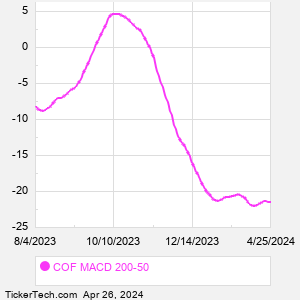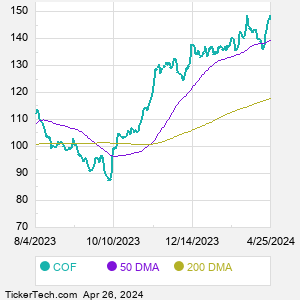Capital One Financial is a financial services holding company. Through its subsidiaries, Co. provides an array of financial products and services. Co. has three primary business segments: Credit Card, which consists of Co.'s domestic consumer and small business card lending, and international card businesses in Canada and the U.K.; Consumer Banking, which consists of Co.'s deposit gathering and lending activities for consumers and small businesses, and national auto lending; and Commercial Banking, which consists of Co.'s lending, deposit gathering, capital markets and treasury management services to commercial real estate and commercial and industrial customers.
When researching a stock like Capital One Financial, many investors are the most familiar with Fundamental Analysis — looking at a company's balance sheet, earnings, revenues, and what's happening in that company's underlying business. Investors who use Fundamental Analysis to identify good stocks to buy or sell can also benefit from COF Technical Analysis to help find a good entry or exit point. Technical Analysis is blind to the fundamentals and looks only at the trading data for COF stock — the real life supply and demand for the stock over time — and examines that data in different ways. One of those ways is to calculate a Simpe Moving Average ("SMA") by looking back a certain number of days. One of the most popular "longer look-backs" is the COF 200 day moving average ("COF 200 DMA"), while one of the most popular "shorter look-backs" is the COF 50 day moving average ("COF 50 DMA"). A chart showing both of these popular moving averages is shown on this page for Capital One Financial. Comparing two moving averages against each other can be a useful visualization tool: by calculating the difference between the COF 200 DMA and the COF 50 DMA, we get a moving average convergence divergence indicator ("COF MACD"). The COF MACD chart, in conjunction with the chart of the moving averages, basically helps in visualizing how the moving averages are showing convergence (moving closer together), or divergence (moving farther apart). |



